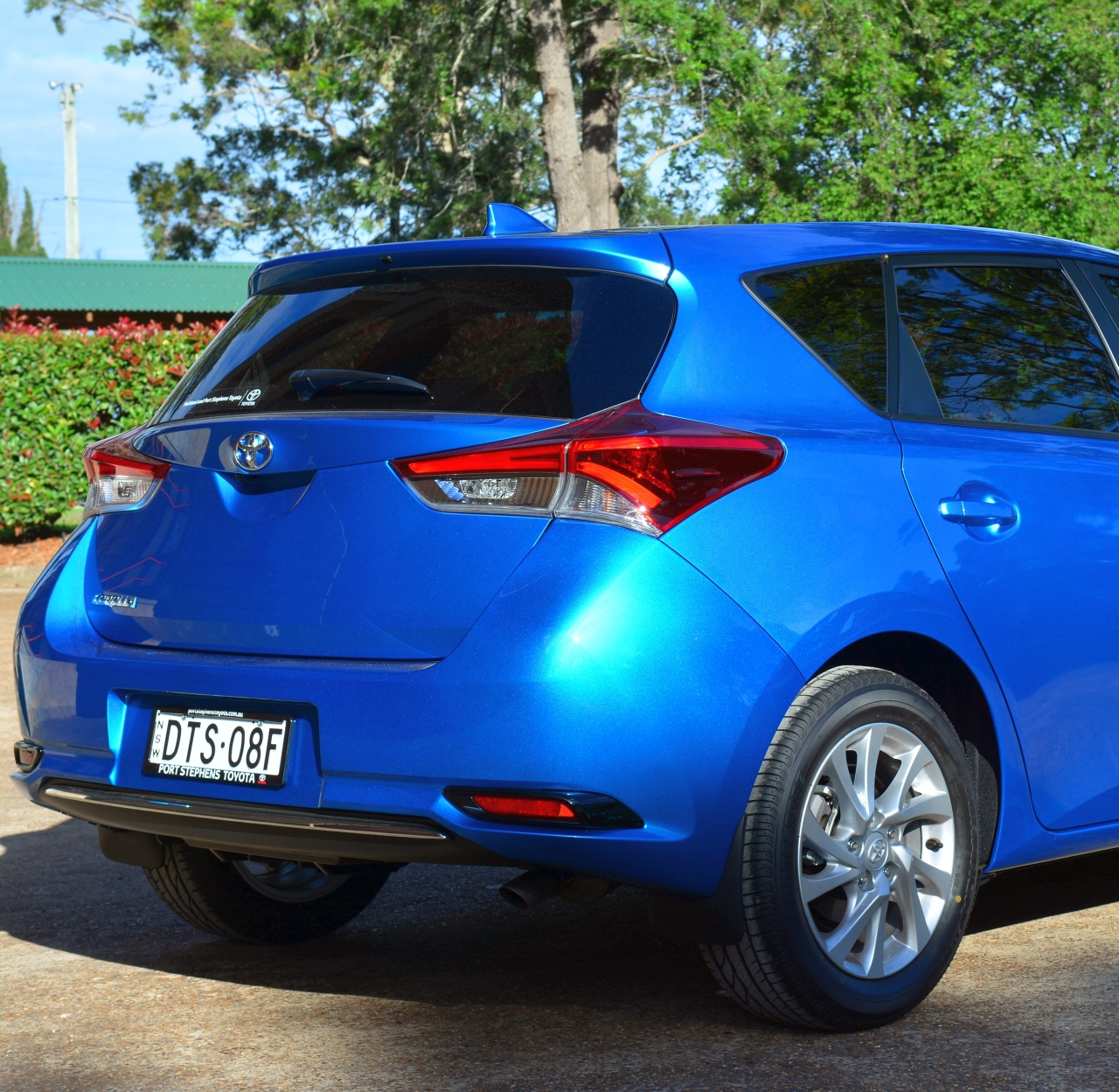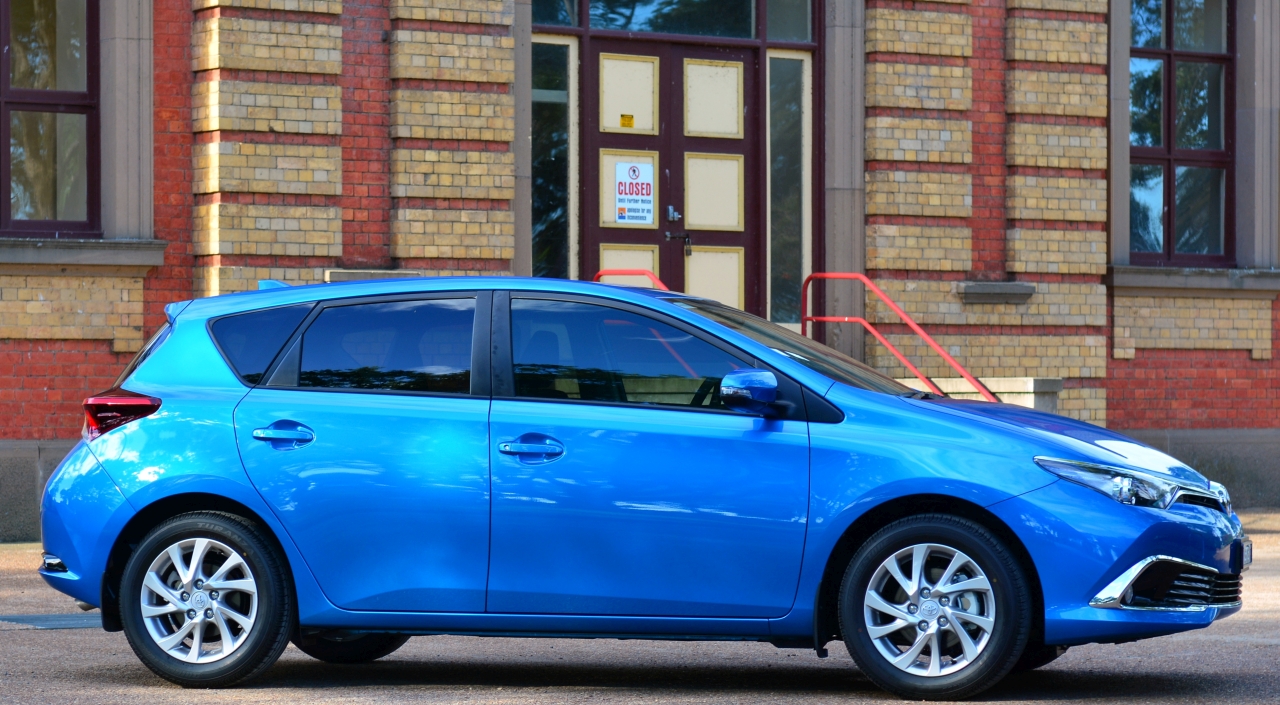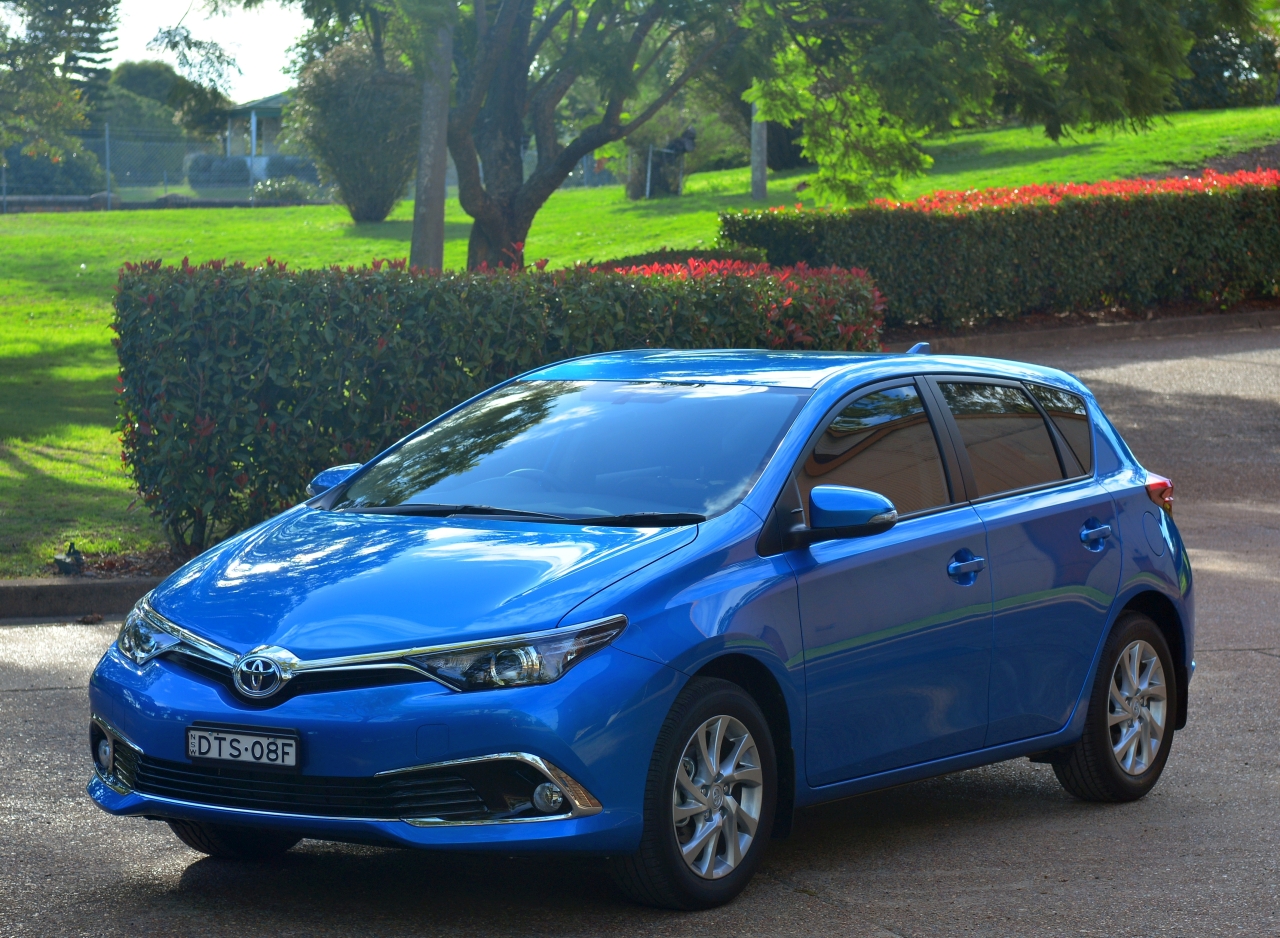-
Posts
3,693 -
Joined
-
Last visited
-
Days Won
140
Content Type
Profiles
Forums
Events
Gallery
Tutorials
News & Articles
Videos
Posts posted by Hiro
-
-
There were 3 AE8x shapes sold here (sedan, hatch, liftback) and all used the same headlights as each other. Series 1 lights are ever so slightly shorter than Series 2/3 (you can tell the difference by the side markers, S2/S3 are much longer) but they are essentially all the same. I think AE82 FXGT lights might be shorter, but they are all imports and very rare (you'd have better luck looking in Japan or NZ).
Whereabouts did you get the information about AE82 lights fitting from?
-
Wheels will almost certainly need to be light truck-style, a quick Google search seems to indicate that the 4x4 version of the Iveco Daily models have a 6x170 PCD w/ a 130mm centrebore, not sure if that'd be any easier to find or not.
http://www.offroadkonection.com.au/17x8.5IvecoDailyWheel-Black6/170WalkerEvans7278567060GB
-
30psi is fine then, note that is cold pressure though so if you've driven to the servo it'll be a few psi higher.
-
35 minutes ago, Benno1 said:
Thanks for that. i'm getting an average of 11L/100km. (mostly smooth driving) Work is slow until financial year and i'm on a tight budget.
For what ever reason tyre pressures have been in KPA for the Avalon. (210kpa) had me head scratching at the servo. A quick conversion on phone returned 210kpa as around 30psi. That confused me because usually most cars sit around 34psi from memory and 30 seemed v low. So i just put 34psi in. Any idea what thats about?
If they are the stock wheels then put in whatever the pressure says on the tyre placard. 30psi is definitely not low for a high-profile factory tyre (Avalons run what, 205/65-R15?)
-
You'll never fully empty a tank in real-world driving, the pump will starve and cut the engine out whilst there is still a few litres sloshing around in the bottom of the tank. When you fill up at a servo, the bowser pump cuts out when it senses pressure returning up the vent line, which is caused by the tank reaching it's presribed fill volume and compressing the air left in the top of the tank.
There should always be a small volume of air left in the top of the tank (this is called ullage). If you try and top-off the tank at the bowser by continually pulling the handle after the first few clicks (depending on how fast you are filling the sloshing fuel can sometimes cut-off the bowser too soon), or in your case going home and gravity-filling with a jerry can, you are forcing extra fluid in to this ullage space which can then cause dramas such as liquid petrol being forced up the vapour recovery system and saturating the charcoal canister (bad)
-
In my experience Toyota Australia didn't tend to pre-wire for options that weren't fitted to that particular car, unlike a lot of overseas markets.
-
3 hours ago, campbeam said:
Following URL comparing the Toyota and Tesla Production Systems also highlights quality and total cost of ownership. I previously mentioned price and reliability.
I also want a totally reliable vehicle that is available to drive 99.9% and servicing [including lifetime and replacement of parts] is low cost.
The irony of that being that Tesla's Fremont factory is actually an old Toyota facility (well, joint Toyota/GM)...
-
3 hours ago, Tesla747 said:
Just took the car for a test drive....100 Kmh = 2400 Rpm....110 Kmh = 2600 Rpm...When the Body was being lifted from engine the cable from the Tbar drive selection was still attached to the engine and possibly stretched...Just wondering if the auto is going into high range...
You'd know if it was stuck in 3rd and not shifting in to 4th (overdrive), as it'd easily be doing 3000+rpm at highway speeds. Not hard to count gear-changes by ear/feel either (just make sure you account for the torque converter locking up which can sometimes sound/feel like an extra shift)
-
 1
1
-
-
3 minutes ago, ZZT86 said:
Automatic ? If so . . . 10.4L/100km isn't uncommon, depends on driving style/conditions & perhaps tyre pressures ?
@100km/h it's about 2250rpm, @ 110km/h I would guess between 2300-2350rpm.
Simple maths will tell you that if it's 2250rpm @ 100km/h, then going 10% faster (110km/h) will increase the revs to just under 2500rpm.
-
 1
1
-
-
Different series (unless you mean KE25 instead of 35) therefore significantly different body.

TE27

KE35
-
14 hours ago, trentmeyer23 said:
If they are all around that A-Frame section, then you are well over your ball weight. The gas bottle(~20kg filled for a 9kg bottle) alone would put you very close to it.
If the axle was a foot further forward, you would probably be ok. I just think it's a poorly designed trailer on a car that really isn't designed for the purpose. To be fair, I think you will experience similar issues with that trailer in most cars that don't have a more commercial(leaf) rear suspensions. E.g. utes, vans and older 4x4s.
Camper trailers usually are designed for much higher-riding off-roaders anyway, regardless of the rear suspension design.
-
There is no such thing as an AE72 in Australia, nor is there a TE71. It'll either be a KE70, AE71 or TE72, however what I think you're most likely to be after is just a normal 7" sealed-beam headlight, which is common across a whole heap of cars.
Taking a photo of what you currently should help a lot, mind you there aren't many classic Toyota owners on here (the user-base tends to be focused more towards the 00s onwards).
-
That's your horn pin, it grounds against a ring on the back side of the steering wheel. A tiny bit of conductive grease or something on there should stop the squeaking.
-
17 hours ago, autoloverzz said:
Is there a particular type of material you're looking at for your car seat covers? A mate has recommended me to use neoprene seat covers from some place called Dingo Trails... I've not tried them myself but have heard some positive reviews. Seems like they're pretty easy to fit? I reckon you could always head over to their site to give 'em a try https://dingotrails.com.au
Good luck!You're replying to a thread which is almost 14 years old, started by a person who hasn't visited these forums in 9 years. Please check dates before you post in the future...
-
In general, Toyota steel wheels use the same style 60-degree taper cone nut that most aftermarket wheels use (although there are arguements about whether steel nuts should be used on alloy wheels and vice versa), and are designed to tighten on the cone face - the hole in the wheel is also only a couple of mm bigger than the diameter of the stud. Toyota alloy wheels however use a square-shouldered shank nut (with captive washer) like Trent posted, which are designed to fit through the hole in the wheel and tighten down on the washer face, and as such have a much bigger hole in the wheel compared to the stud size in order to accept the shank.
-
3 hours ago, campbeam said:
I was more thinking definitely a replacement. Big question is whether it needs to be replaced again.
With a non-interference type engine, if the belt breaks then the piston and valves are not going to collide. With an interference type engine, you are running a known risk of engine damage [expensive repair bill] when the belt fails.
A minimal risk approach would be to replace both the timing belt and the water pump in the very short term. A riskier approach would be to wait for when the water pump needs to be replaced then replace both.
7AFE is a non-interference engine, timing belt replacement interval is 100k. Factory belt is most likely to be an Aisin or Mitsuboshi (possibly Gates), Made In Italy definitely screams replacement.
-
16 hours ago, Leroy86 said:
Sorry for taking so long to reply.
@ Trent. I would love to build a quick car with turbo but staying standard with the 3sge. Its the 86 imported and from what I read ( Yamahas input into head and other changes ) it should be quick enough for me to play with. Would like to know more about the piece between intake manifold and head.
The first-gen 3SGE is a nice smooth gem of a motor but unfortunately it's no powerhouse - you're looking at barely any more power than a smallport 4AGE (although at lower revs and with more torque). Later-generation 3Ss have much more power (up to 40% in some cases) are essentially drop-in replacements (with some wiring mods of course).
As @trentmeyer23 said, the sandwich plate between the manifold and the head is a variable intake butterfly system, similar to the one on the early bigport 4AGEs. Basically there are two intake runners for each cylinder rather than the traditional one, but every second one is blocked off by a butterfly valve at low rpm. This forces all the air to go through one small runner per cylinder, which increases port velocity and improves low-down torque. At higher rpm/throttle openings the valves open up to allow extra airflow to each cylinder which improves top-end power.
Oh, and just about every Toyota with a -G head has had Yamaha's involvement, from the 3M in the 1967 2000GT to the 4AGE/3SGE in the 80s/90s and through to the 2ZZGE in the 00s and the 1LRGUE/2URGSE Lexus engines in the '10s.
-
Because Guy Sebastian is a brand ambassador for Toyota and this is part of their current marketing scheme.
-
8 hours ago, trentmeyer23 said:
Looks good. Glad you bought a manual.
It was one of the main things stopping us looking at the SX, which sucks because up until last year or so you could still get the SX in manual
-
So whilst technically this is the wife's car, I'm the one burdened with modifications, taking photos, and posting of pictures/stories in the appropriate forums.Introducing Daphne. Yes, we like to name all our cars. However, the first name my wife chose (Artoo, since she loves R2D2 and the blue is perfect) didn't quite gel when we decided after the first few days of ownership that HE was actually a SHE. So far, Daphne has come out as the likeliest alternative, but we're still not 100% sold on the name so it may change again the future.Anyhoo, Daffers is a 2018 Toyota Corolla Ascent Sport in Blue Gem metallic. She is kitted out as standard with 16" alloy wheels, fog lights, 7" full touchscreen infotainment system with 6-speaker audio, Bluetooth and the optional Sat Nav pack. Interestingly, all the petrol models (which all have the exact same 2ZRFE engine) are chassis code ZRE182, which means they have a torsion-bar rear end, whilst the Hybrid is a ZWE186 which gives it the same IRS that the Auris and the US-spec iM have. Sucks to be us sometimes.
I'm yet to give her a really good wash (first road-trip to Sydney last weekend and a week's worth of daily commute for my wife has left her a little dusty), but figured I should at least get some nice photos to kick off the memories before we start doing anything serious to her. These were taken at the Walka Water Works, which is an old 19th-century Victorian/Italianate pumping station that used to supply water to the Maitland and Newcastle regions, but is now part of a public recreation reserve. Great spot for photos, although I wasn't taking too much effort and probably should have waited another hour or so for the golden hour light.




 by Ian Rigby, on Flickr
by Ian Rigby, on Flickr -
2 hours ago, Raye said:
Hi,
Is there any chance that you could scan the owners manual and send me a copy?
I don't have any information about my 2006 Porte Welcab and I finding things by trial and error.
Thanks
Ray
The person you are replying to made a grand total of one post on this forum (this thread) and has not been online since in the last 7 years. You could try sending them a personal message but I highly doubt you'd get a reply.
-
To expand on Trent's comment, OBD2 was only mandated in Australia in 2006 (but was a lot earlier overseas, especially in the US which was 1996 so a lot of things you see online aren't applicable for Australian models) but prior to that Toyota used a proprietary diagnostics system that used very similar plugs (or identical ones) to OBD2 but with their own software/protocols.
-
9 hours ago, campbeam said:
If you want a faster Aurion upgrade to the 2018 model. Otherwise, look at the Lexus models with a turbocharged V6 or V8.
No current or former Lexus model had a turbocharged V6. The next LS may, however we're talking about a $200k limo here.
-
Pay particular attention to oil leaking either from under the crank pulley or in to the gearbox bellhousing - this would indicate that a crank seal has blown (which is a typical issue arising from overfilling oil). Also, if the oil got really aerated from being overfilled (when the crankshaft gets submersed in oil it basically acts like a blender) then there's a chance you'll have damaged the crank and/or rod main bearings, so listen for any noise that may indicate Rodney is knocking on your front door.
-
 1
1
-





_CS_coupe_(2015-06-18)_01.jpg/1024px-1977_Toyota_Corolla_(KE35R)_CS_coupe_(2015-06-18)_01.jpg)








Items to look for!
in Camry Club
Posted
XV20s are big enough that you can climb in to the boot with a torch and have someone hose over the outside of the car too if you want to check for leaks. I'd be looking at the boot seal, around the taillights, and also checking the cabin overpressure vent, along with making sure the drain plugs for the spare wheel well and the side wells are fitted properly